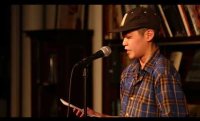Birdbrain
The National Audubon Society, National Geographic, BirdLife International, and the Cornell Lab of Ornithology have teamed up to declare 2018 the Year of the Bird, to celebrate and draw awareness to the centennial of the signing of the Migratory Bird Treaty Act. As you go about your daily tasks this week, keep an eye out for the birds that you encounter, whether flying overhead, perched in trees, or underfoot. Write an essay inspired by the feathered friends that fly in and out of your day. What memories or emotions do birds bring to mind? Have they been symbolic of an important moment in your life?





